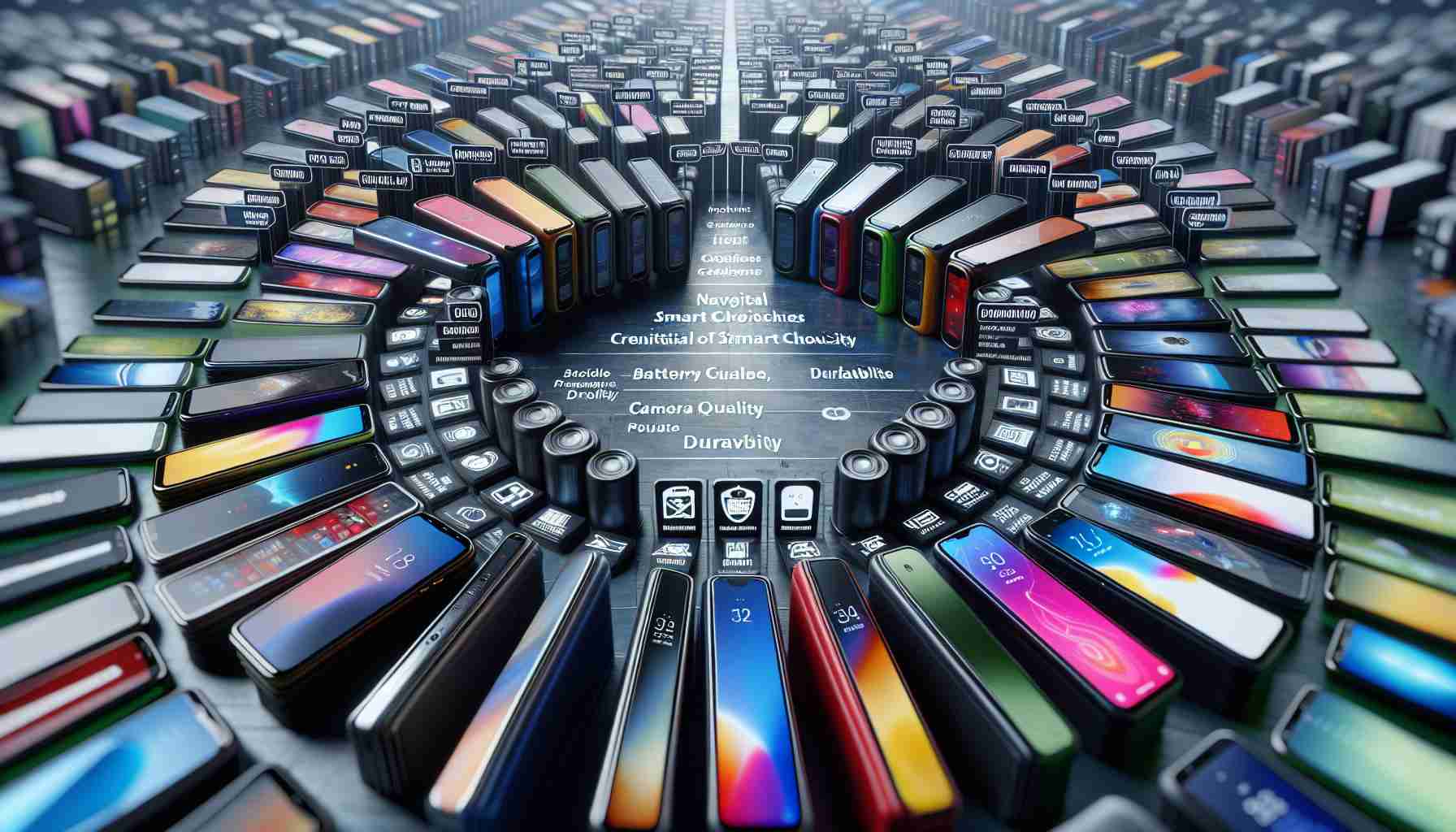Exploring Options Beyond Favorite Brands
Consumers often miss out on superior technology and value from alternative manufacturers due to a tunnel vision towards favored brands. Establishing loyalty to a brand can bring comfort and trust; however, it narrows the perspective blocking potentially better offers from companies like OnePlus, Google, and Xiaomi, who frequently present devices of comparable or superior quality at competitive prices.
Operating System Considerations
Choosing an operating system (OS) that complements one’s needs is a crucial step. The OS dictates not only the user experience but also the range of available apps and device compatibility. An IDC study found that many people returned to their previous OS due to dissatisfaction with the interface and functionality of new systems. This highlights the importance of evaluating the pros and cons of each OS before making a decision.
Battery Life Overlooked
Smartphone performance relies heavily on battery life, yet consumers often overlook this aspect. Despite 45% of smartphone users expressing battery life dissatisfaction within a year, attention is skewed towards features like camera quality. Assessing factors like energy consumption, screen-on time, and processor efficiency are essential, and opting for phones with fast charging can mitigate battery concerns.
Avoiding the Overpayment Trap
High-end smartphones tempt with remarkable features, though many such as high refresh rate screens or extensive memory are superfluous to the average consumer. Statista reported that 60% of users do not utilize advanced features, suggesting that identifying actual needs can lead to smarter, cost-effective choices.
Regular Software Updates
Software updates are paramount for security and performance enhancements. Not all phones receive regular updates, especially in the mid-range and budget categories. Before purchasing, researching the manufacturer’s update policies can save future frustrations.
Compromising on Build Quality
The pursuit of affordable or feature-rich phones sometimes comes at the expense of build quality. A study by SquareTrade indicated a quarter of smartphone users experience device damage within the first year, often due to drops or water damage. Investing in devices with sturdy build and water resistance can prevent costly repairs and replacements.
Compatibility Concerns
Ensuring a new smartphone fits seamlessly within one’s existing ecosystem of devices and services cannot be understated. Especially for Apple enthusiasts, the seamless integration with other Apple products creates a convenient and interconnected user experience, therefore compatibility should be a key factor in the selection process.
Assessing the True Needs vs. Fancy Features
It’s crucial for consumers to differentiate between must-have features and marketing fluff. Smartphones are often promoted with buzzwords like “AI camera” or “infinity display,” which may not translate to real-world benefits for every user.
User Demographics and Usage Patterns
Different user demographics have distinct needs. For example, a gamer might require a smartphone with a high-refresh-rate screen and robust processor, whereas a business professional might prioritize secure email and robust productivity tools. Understanding one’s usage patterns can guide a more informed purchase.
Environmental Impact
The environmental impact of frequent smartphone upgrades has led to calls for sustainable practices in the industry. Smart choices also encompass considering the ecological footprints of devices, looking for brands that are committed to environmentally friendly policies, and recycling old devices properly.
Evaluating After-Sales Service
Quality of after-sales service is a critical yet often underestimated element. A brand’s reputation for customer service should be a consideration, as dealing with repairs or technical support can be a significant part of the ownership experience.
Resale Value
The resale value of a smartphone can be an important factor for those who upgrade frequently. Brands like Apple and Samsung usually maintain higher resale values compared to less-known brands. Therefore, the potential resale value can contribute to the overall cost-effectiveness of the purchase.
Advantages and Disadvantages of Brand Loyalty
Advantages:
– Familiarity with the user interface and software ecosystem
– Establishing trust with a brand’s product reliability and customer service
– Potential savings through brand loyalty programs or promotions
Disadvantages:
– Missing out on potentially better or more cost-effective technologies from other brands
– Overpaying for features that align with brand prestige rather than personal necessity
– Limited perspective on a broader range of available products and innovation
Key Challenges/Controversies
– Balancing the desire for the latest technology with sustainable consumer practices poses a dilemma
– The ongoing controversy of right-to-repair: Manufacturers are often criticized for making it hard to repair devices, leading to increased electronic waste and consumer costs
– Privacy concerns: With every new technology integrated into smartphones, privacy implications must be considered, particularly with lesser-known brands that may have less robust security measures
For further information on smartphone technologies and reviews to help navigate smart choices, you can visit websites such as:
– GSM Arena for detailed phone specifications and comparisons
– TechRadar for technology news and reviews
– Consumer Reports for unbiased product reviews and recommendations
– Android for details on the Android OS and compatible devices
– Apple for information on iPhones and the iOS ecosystem
It’s important to note that as of the knowledge cutoff date in 2023, these URLs were valid. Always ensure you are visiting official and reputable sources when researching your next smartphone purchase.
